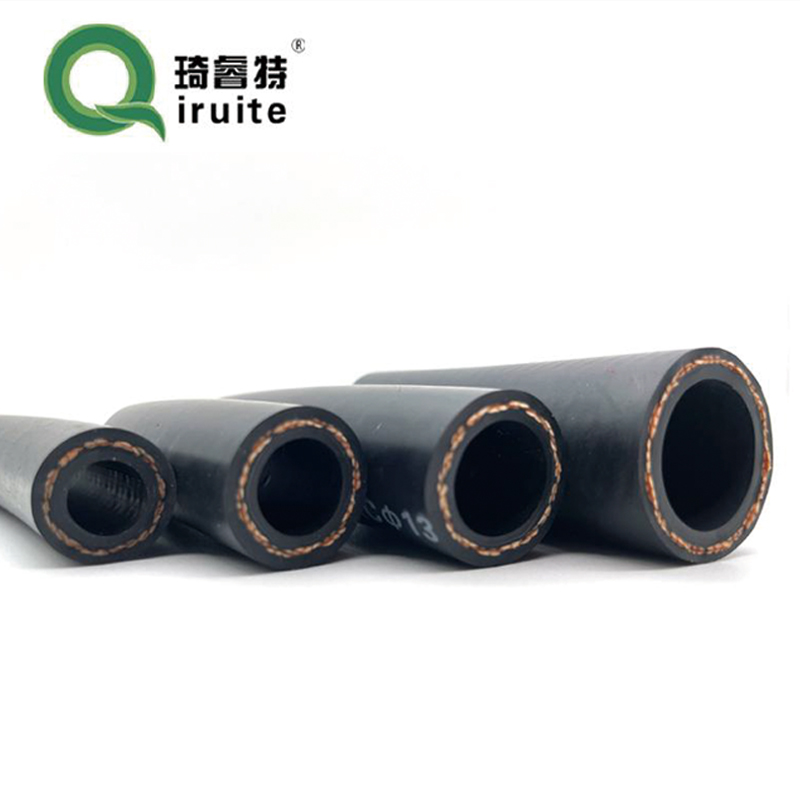15 Inch Power Steering Hose for Enhanced Vehicle Performance and Durability
Understanding the Importance of 5/16 Power Steering Hose in Automotive Applications
Power steering systems are a critical component in modern vehicles, providing drivers with the ease of maneuverability and control necessary for safe driving. Among the various components that make up these systems, the power steering hose plays a pivotal role in ensuring the effective transfer of hydraulic fluid under pressure. Specifically, 5/16 power steering hoses are commonly utilized in many automotive applications due to their ideal size and performance characteristics. In this article, we will explore the importance, construction, and proper maintenance of 5/16 power steering hoses in vehicles.
The Function of Power Steering Hose
The primary function of the power steering hose is to convey hydraulic fluid from the power steering pump to the steering gear. As the driver turns the steering wheel, the pump sends fluid through the hose, exerting pressure on the steering gear, which assists in turning the vehicle's wheels. This hydraulic assist significantly reduces the effort required to steer, enhancing the overall driving experience, particularly in larger vehicles or during low-speed maneuvers.
Specifications of 5/16 Power Steering Hose
The 5/16 designation refers to the internal diameter of the hose, which measures approximately 0.3125 inches. This size is commonly found in many automotive designs, balancing flexibility and pressure resistance. The hose is typically made from high-quality rubber or synthetic materials that are reinforced with braided strands to withstand high pressure and prevent bursting or collapsing. Additionally, power steering hoses often feature protective outer layers to guard against abrasion, heat, and chemical exposure, which are common in engine compartments.
Material Considerations
When selecting a power steering hose, it's essential to consider the materials used in its construction. Premium hoses often utilize materials that resist deterioration caused by various automotive fluids, including oil and coolant. The compatibility of the hose material with the hydraulic fluid is crucial to prevent leaks and maintain the integrity of the steering system. Rubber hoses are standard due to their elasticity and flexibility, while synthetic hoses may offer improved performance in extreme temperatures.
Installation Guidelines
5/16 power steering hose

Proper installation of a 5/16 power steering hose is crucial for the safe and efficient operation of the power steering system. Key installation considerations include ensuring that all connections are tight and free of leaks and that the hose is routed away from sharp edges or hot surfaces that could cause wear or damage. It is advisable to use new clamps when replacing the hose to ensure a secure fit and to always check the manufacturer’s specifications for torque settings when tightening fittings.
Maintenance and Inspection
Regular maintenance of the power steering hose is vital for vehicle safety and performance. Drivers should periodically inspect the hose for signs of wear, such as cracks, bulges, or leaks. Any visible damage or significant wear may indicate that it’s time for a replacement. Additionally, checking the power steering fluid level and quality is essential, as low fluid levels can lead to increased wear on the hose and other components of the steering system.
Signs of Hose Failure
Recognizing the signs of hose failure is crucial for preventing complete steering system failure. Common symptoms may include
- Steering Wheel Stiffness If the steering wheel becomes difficult to turn, it may indicate a problem with the power steering hose or the fluid itself. - Fluid Leaks Puddles of power steering fluid under the vehicle can signal a hose leak or failure. - Hissing Noise A hissing or whining sound when turning the steering wheel may indicate air in the power steering system due to a compromised hose.
Conclusion
The 5/16 power steering hose is an integral component of the automotive steering system, facilitating the critical function of hydraulic fluid transfer. Understanding its construction, functionality, and maintenance ensures that drivers can rely on their vehicles for safe and efficient operation. Regular inspections and timely replacements will prolong the life of the power steering system and enhance driving comfort. As the automotive landscape continues to evolve, maintaining key components like power steering hoses remains essential to ensuring vehicle performance and safety.
-
Ultimate Spiral Protection for Hoses & CablesNewsJun.26,2025
-
The Ultimate Quick-Connect Solutions for Every NeedNewsJun.26,2025
-
SAE J1401 Brake Hose: Reliable Choice for Safe BrakingNewsJun.26,2025
-
Reliable J2064 A/C Hoses for Real-World Cooling NeedsNewsJun.26,2025
-
Heavy-Duty Sewer Jetting Hoses Built to LastNewsJun.26,2025
-
Fix Power Steering Tube Leaks Fast – Durable & Affordable SolutionNewsJun.26,2025

